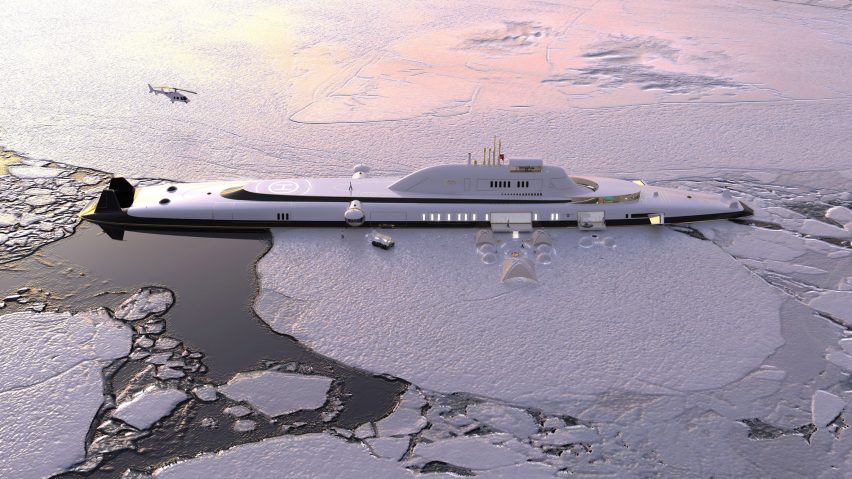
Migaloo aims to disrupt superyacht market with giant luxury submarine
Austrian company Migaloo has unveiled its design for a 165-metre-long submersible superyacht that could allow the ultra-rich to enjoy private underwater adventures.
Technical data released about the Migaloo M5 suggests that the submarine could descend to a depth of approximately 250 metres beneath the ocean surface and remain submerged for up to four weeks.
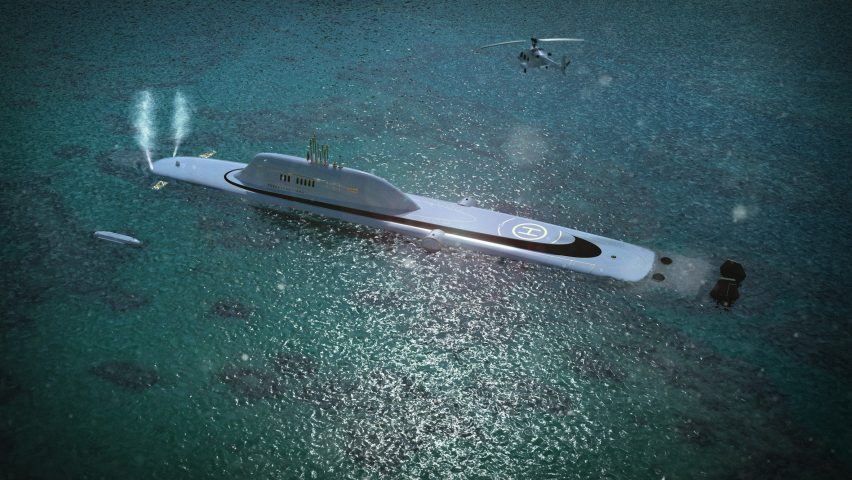
It features many of the same luxuries as a traditional superyacht including a helipad, swimming pool, gym and cinema while offering a greater feeling of seclusion and adventure, according to Migaloo.
"The needs of superyacht owners for their vessels are more complex than ever [and] do not just include performance, length or design," explained the company's CEO and chief designer Christian Gumpold.
"Owners are looking for privacy, security and protection for themselves, their guests and their valuables, or for the fulfilment of unique experiences up to scientific desires as well as for the greatest possible exclusivity."
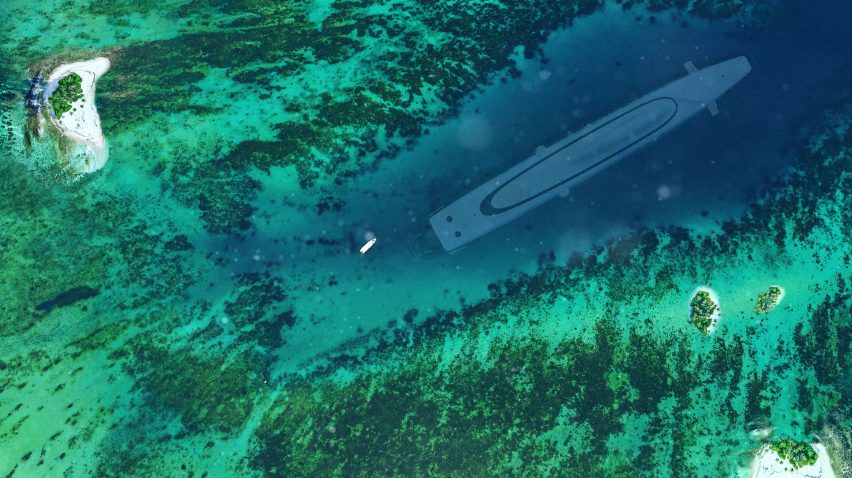
Migaloo, which describes itself as a "private submersible yacht" design studio, says it is taking orders for the $2 billion submarine although no prototype has been revealed to date.
The company suggests the vessel would measure 165.8 metres in length and 23 metres across at its widest point, with a range of roughly 15,000 kilometres and a speed of 20 knots surfaced or 12 knots submerged.
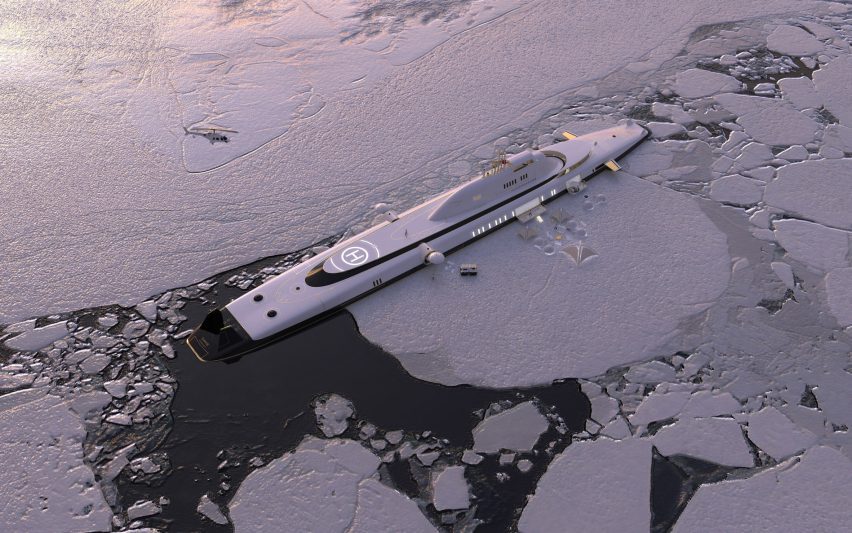
To ensure feasibility and safety, the M5 utilises technologies borrowed from existing motor yachts and submersibles, such as its double-hull construction, multiple pressure hulls and diesel-electric propulsion augmented by air-independent propulsion.
A helipad is included on the M5's aft deck and a dedicated pressure hull would be used as a hangar for storing a helicopter. Drones and a hot air balloon could provide further aerial transportation options.
Owners could also specify Migaloo's Limo Sub Tenders (LST) – smaller submarines that can accommodate up to 12 guests for underwater exploration, along with various surface tenders and landing craft.
According to Gumpold, the preliminary design for the M5 is intended as inspiration and any Migaloo vessel would be designed in collaboration with the owner to meet their specific preferences and requirements.
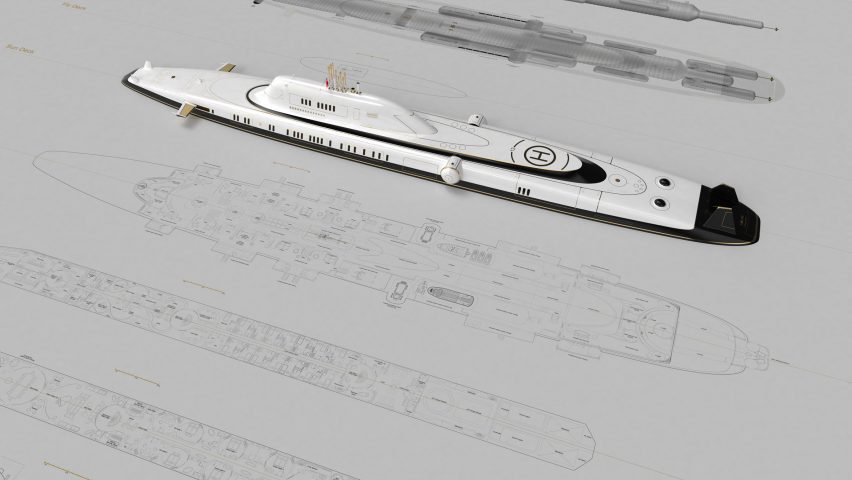
The default design for the interior shows spaces including a large salon with a DJ booth, a swimming pool and spa, a gym, an art gallery and a cinema, along with a multitude of lounges and dining areas.
The owners' area at the front of the vessel includes a salon, bar, children's playroom, office and private art gallery. The bedroom has his-and-hers dressing areas and bathrooms, as well as underwater viewing spheres that protrude from the port and starboard sides.
Migaloo envisions its submersibles being painted white to distinguish them from conventional submarines. This idea led the firm to borrow its name from a rare albino humpback whale famously found off Australia's east coast.
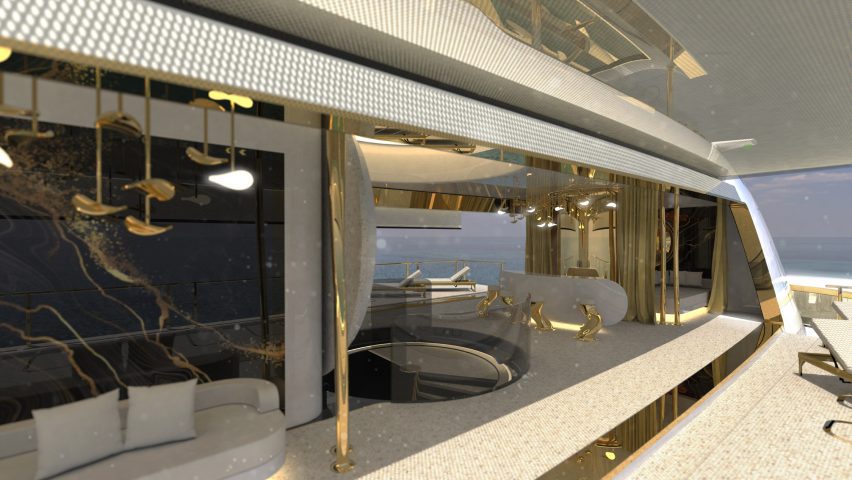
The company aims to offer a holistic management service, including overseeing the yacht's engineering and construction, as well as addressing all technical and legal concerns throughout the process.
Previous attempts at creating luxury submarines have come from carmaker Aston Martin, which developed a concept for a $4 million limited-edition submersible to "redefine luxury for a select few".
Others have focused instead on harnessing submersible vessels for the good of the planet, with Indonesian designer Faris Rajak Kotahatuhaha proposing an iceberg-making submarine that could re-freeze the Arctic.